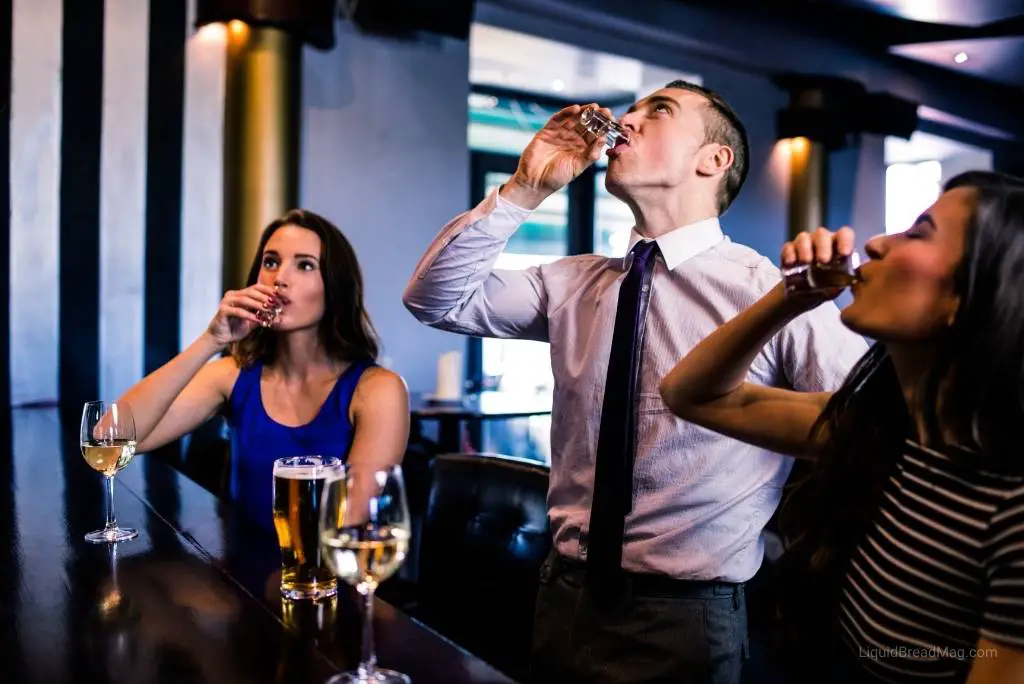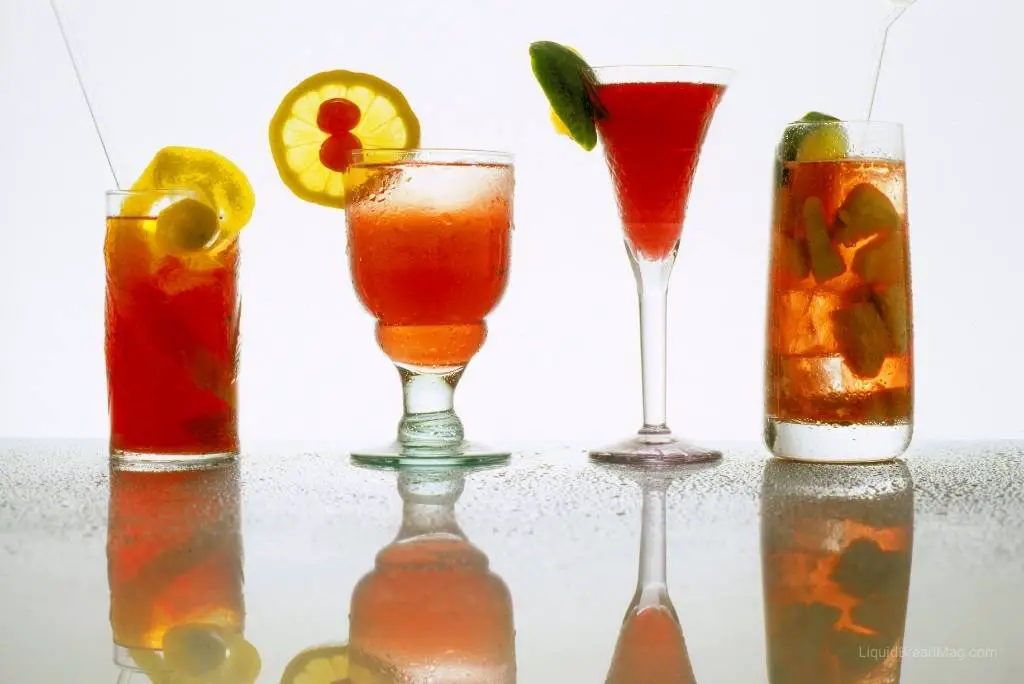Most drinkers are familiar with the burning sensation in the mouth and throat after swallowing a strong alcoholic beverage. Some people find the burning feeling a nuisance, whereas others consider it a normal part of alcohol consumption. No matter how you feel about it, you might wonder, why does alcohol burn on its way down?
Alcohol burns going down because it contains ethanol (a type of alcohol). Ethanol lowers the threshold for your TRPV1 receptors, which tell your brain that there’s something hot in your mouth. This signal often causes a painful, burning sensation to occur.
In this article, I’ll talk a bit more about TRPV1 receptors and why alcohol creates this odd sensation in our bodies. Additionally, I’ll offer tips and tricks to decrease the burning sensation if it bothers you. Read on to learn more.
Why Does Alcohol Burn Your Throat, Mouth, Stomach, and Nose?
Have you ever eaten a hot chili pepper and noticed that your mouth immediately feels like it’s on fire? Or tried to take a sip of your tea before it cools and immediately regretted your decision?
This sensation occurs because the capsaicin in the pepper and the temperature of the tea trigger the TRPV1 receptor.
Alcohol burns your throat, mouth, stomach, and nose because the ethanol in the drink affects TRPV1 receptors in the brain. Ethanol essentially lowers the threshold of these receptors, creating a burning sensation in the mouth and throat if you drink it, or in the nose if you take a large whiff.

Shaker & Spoon - We bring the bar to you! It's the perfect home happy hour🍸→ Get Your Drink Box
What Is the TRPV1 Receptor?
The TRPV1 receptor is a receptor in your body that functions as a body regulator. When you eat something hot, this receptor sends a signal to your brain. If there’s a strong enough trigger, typically 107ºF or above, your body will then experience a hot, burning sensation.
The TRPV1 receptor is also known as the capsaicin receptor because capsaicin bonds to these receptors. Capsaicin is the ingredient found in spicy foods that causes pain in your mouth when you eat a wing that is too spicy.
The TRPV1 Receptor and Alcohol
Alcoholic drinks, such as wine and spirits, contain ethanol because of the fermentation process. In addition to capsaicin, ethanol also bonds to the TRPV1 receptors.
However, unlike capsaicin, ethanol doesn’t immediately signal your brain, alerting it to a food that is too spicy. Instead, ethanol acts as a receptor dampener by lowering the triggering threshold for hot temperatures.
This means that instead of your receptors activating at 107ºF (41.67°C), they now activate with temperatures as low as 93ºF (33.89°C). Activation at this temperature is an issue when you consider that this is lower than our natural body temperature.
When you lower this threshold, your TRPV1 receptors interpret your body as being too hot and will cause this burning sensation where the ethanol has come into contact.
To learn more about how alcohol interacts with your body’s receptors, you can check out this video on YouTube from SciShow:
More Ethanol Means More Burn
Having a drink with a high ethanol content, meaning a high alcohol content, can cause these issues to worsen. Drinks with higher ethanol content will create more of a burning sensation than drinks with lower alcohol content.
Decreasing Alcohol Burn
Since all alcoholic drinks contain ethanol, you’re setting yourself up for the risk of feeling that burn when you drink.
However, there are some things you can do to help decrease that burn.
Drink Lower Alcohol Content Beverages
Because the ethanol in your drink ultimately causes the burning sensation (whether in your nose or by lowering the threshold for your TRPV1 receptors), having less alcohol in your beverage will help lessen this burn.
Next time you go out, try ordering wine or beer instead of a whiskey. Wine and beer fall into an alcohol by volume range of about 5% – 15%. In comparison, whiskey has an average alcohol by volume of 40% – 45%.
If you’re prone to alcohol burn, switching drinks may help you feel some relief.
Have Your Drink Chilled
When your mouth and throat are burning, your TRPV1 receptors are telling your brain that they’re too hot. Drinking a beverage with ice in it or chilled is one way to help lower the effects of this burn. The cooler temperature of your drink will cool down that area of your body and decrease the activation of those receptors.
If you’re going to have a drink with higher alcohol content, like whiskey, try having it on the rocks instead of neat. The presence of the ice may help reduce the burn effect while you’re drinking.
Have Some Citrus Handy
Have you ever wondered why it’s common for someone to suck on a lime after they take a shot of tequila? This is because the acidity from the citrus fruit can mute the burn that the ethanol leaves in your mouth.
If you’re drinking more than a shot, try adding some citrus into your drink. Having a margarita or a Moscow mule will likely cause less burning than tequila or vodka alone.
Cut Your Drink With A Mixer or Fruit Juice To Reduce The Burn
Instead of drinking a spirit on its own, try mixing your liquor or “cutting your drink” with fruit juice or water. Cutting your drink will dilute the alcohol content in your beverage, making it easier to drink and causing the burn to lessen.

Next time you’re at the bar, try ordering your whiskey with coke or your vodka with cranberry juice. These additions to your drink will help decrease the burn you would otherwise feel from whiskey or vodka alone.
Final Thoughts
If you’re averse to alcohol due to the burning sensation, then you can thank ethanol for that. Ethanol lowers the temperature needed to activate the body’s TRPV1 receptors, signaling your brain that your mouth, throat, and stomach are hot — and your nose if you happen to smell a strong drink before consuming it.
The next time you’re out responsibly enjoying a drink, you won’t have to worry about the annoying burning sensation as long as you utilize some of the tips in this article. Bottoms up!
